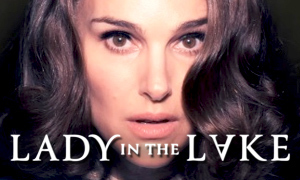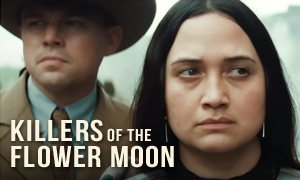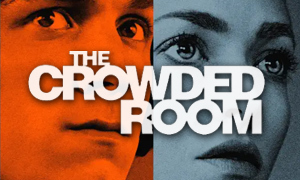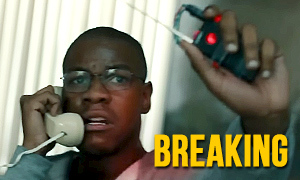Till: History vs. Hollywood
Jalyn Hall
Born: December 18, 2007
Birthplace:
Los Angeles, California, USA
Emmett Till
Born: July 25, 1941
Birthplace: Chicago, Illinois, USA
Death: August 28, 1955, Drew, Mississippi, USA (lynching - mutilated and shot)
Danielle Deadwyler
Born: May 3, 1982
Birthplace:
Atlanta, Georgia, USA
Mamie Till-Mobley
Born: November 23, 1921
Birthplace: Webb, Mississippi, USA
Death: January 6, 2003, Chicago, Illinois, USA (heart failure)
Sean Patrick Thomas
Born: December 17, 1970
Birthplace:
Washington, D.C., USA
Gene Mobley
Born: March 26, 1923
Birthplace: Minter City, Mississippi, USA
Death: March 18, 2000, Chicago, Illinois, USA
Whoopi Goldberg
Born: November 13, 1955
Birthplace:
New York City, New York, USA
Alma Carthan
Born: January 24, 1902
Birthplace: Copiah County, Mississippi, USA
Death: November 11, 1981, Cook County, Illinois, USA
Bio: Emmett Till's Grandmother
Frankie Faison
Born: June 10, 1949
Birthplace:
Newport News, Virginia, USA
John Carthan
Born: March 23, 1902
Birthplace: Winona, Mississippi, USA
Death: January 1969, Summit, Illinois, USA
Bio: Emmett Till's Grandfather
Haley Bennett
Born: January 7, 1988
Birthplace:
Fort Myers, Florida, USA
Carolyn Bryant
Born: July 23, 1934
Birthplace: Indianola, Mississippi, USA
Sean Michael Weber
Roy Bryant
Born: January 24, 1931
Birthplace: Charleston, Mississippi, USA
Death: September 1, 1994, Ruleville, Mississippi, USA (cancer)
Eric Whitten
Birthplace:
USA
J.W. Milam
Born: February 18, 1919
Birthplace: Tallahatchie County, Mississippi, USA
Death: December 31, 1980 (bone cancer)
John Douglas Thompson
Born: 1964
Birthplace:
Bath, Somerset, England, UK
Moses Wright
Born: April 8, 1892
Birthplace: Mississippi, USA
Death: August 1977, La Grange, Illinois, USA
Bio: Emmett Till's Great-Uncle
Did Emmett Till's mother warn him that Chicago and Mississippi were two different worlds?
Yes. The Till true story confirms that before he and his cousin, Wheeler Parker, left for their trip to visit their relatives in the small southern town of Money, Mississippi, Emmett's mother, Mamie Till, cautioned the boys that Mississippi was very different from Chicago and they needed to understand how to behave around whites in the South. Mamie had been born in Mississippi and moved north with her family when she was two as part of the Great Migration.
"I let them know that Mississippi was not Chicago," recalled Mamie, "and when you go to Mississippi, you're living by an entirely different set of rules. It is, 'yes, ma'am' and 'no, ma'am,' 'yes, sir' and 'no, sir.' 'And, Bo, if you see a white woman coming down the street, you get off the sidewalk and drop your head. Don't even look at her.'" Bo was Mamie's nickname for Emmett. -American Experience
Did Emmett Till travel to Mississippi to visit family?
Yes. A Till fact-check confirms that 14-year-old Emmett was on summer vacation in August 1955 when he traveled by train from Chicago to the Mississippi Delta region near the town of Money, Mississippi to visit relatives, including his great uncle, Moses Wright, and cousins. The very same train that took him down would later bring back his body.
Did Emmett Till try to flirt with grocery store proprietor Carolyn Bryant?
Emmett Till and his cousins skipped church where his Great Uncle Moses Wright was preaching to meet up with some other boys to go and buy candy at a small grocery store. The exact events that happened inside Bryant's Grocery and Meat Market (pictured below) are a matter of dispute. Carolyn Bryant, the white, married 21-year-old co-proprietor at the small grocery store she ran with her husband, accused Till of grabbing her hand and asking her for a date while she was stocking candy. She testified that he then followed her to the register, grabbed her around the waist, and said, "What's the matter, baby, can't you take it?"
However, following their arrest, Sheriff George Smith only said that the alleged killers (Carolyn Bryant's husband and his half-brother, J.W. Milam) had been angered by Till's "ugly remarks." The sheriff never mentioned any alleged physical harassment. Moses Wright, who witnessed the two men abduct Till, said that they only accused Till of "talk" at the store. It is more likely that the killers' defense attorneys invented the physical harassment aspect as part of their defense strategy.
Emmitt Till's cousin, Simeon Wright, who wrote the book on which the movie is in part based, said that he entered the store less than a minute after Till, and he didn't notice any inappropriate behavior. A 2006 FBI investigation of the case found a second anonymous witness who had been inside the store and supported Wright's account. Yet, it seems likely that some type of verbal exchange did happen inside the grocery store since Carolyn Bryant felt the need to leave the store and retrieve a handgun from underneath the seat of a car.
What is somewhat less disputed is that once outside the store, Till wolf-whistled toward Bryant as she walked to the car. Simeon Wright, who was there with Till, said, "I think he wanted to get a laugh out of us or something," adding, "He was always joking around, and it was hard to tell when he was serious." The 2006 FBI report disputes that Till was whistling at Bryant and may have instead been whistling to the boys playing checkers across the street, though this seems less likely. Emmett Till's mother, Mamie Till-Mobley, said that she had taught him to whistle to overcome his stutter from polio and that might explain why he whistled (the movie opts not to include this possibility). The boys fled after they saw Bryant retrieve the gun.
Was Carolyn Bryant's husband away at the time of the incident at their store?
Yes. While researching how accurate is Till, we learned that Roy Bryant, 24, was on a lengthy trip hauling shrimp to Texas. He didn't return home until August 27, 1955, three days after Carolyn's encounter with Emmett Till at their store. Fearing what he might do to Till, Carolyn didn't tell her husband what happened. Instead, Roy found out from someone who hung around their store. He was reportedly angry at Carolyn for keeping it from him.
Did Carolyn Bryant's husband and his half-brother abduct Emmett Till from his relative's home?
Yes. Several nights after the incident with 21-year-old Carolyn Bryant at her family's grocery store, her husband, Roy, and his half-brother, J.W. Milam, went to Emmett Till's great-uncle's house where he was staying. Armed, the two men abducted Emmett. After taking him away, they beat and mutilated him prior to executing him by shooting him in the head. Roy Bryant and J.W. Milam then sunk Emmett Till's body in the Tallahatchie River.
How long was it before Emmett Till's body was discovered?
Following Emmett Till's murder, his bloated and mutilated body was discovered three days later by two boys who were fishing in the Tallahatchie River. Till had been shot above the right ear and one of his eyes was dislodged from its socket. Barbed wire had been wrapped around his neck to secure the 75-pound fan blade that weighed him down. His body was so disfigured and unrecognizable that his great uncle, Moses Wright, identified Till by a silver ring that had Till's father's initials on it.
Did Emmett Till's mother, Mamie Till-Mobley, insist on an open casket?
Yes. In researching the Till true story, we learned that Mamie Till-Mobley wanted the world to know what happened to her son. She worked to stop a local Mississippi Sheriff's orders to immediately bury Emmett Till's body in Mississippi. She reached out to local and state authorities in Illinois, and Chicago Mayor Richard Daley helped to make sure her son's body was sent back to Chicago.
Like in the Till movie, Mamie not only insisted on an open casket, she insisted on a public funeral service as well. She later recalled that when she went to the funeral home to identify the body, the stench was noticeable two blocks away. When the undertaker, A.A. Rayner, asked her if she wanted him to retouch Emmett's body, Mamie responded, "No, Mr. Rayner, let the people see what I have seen. I want the world to see what is going on in Mississippi, in this great old United States of America." -ABC News
A Till fact-check reveals that tens of thousands of people came to the mortuary to see the body. Emmett Till's funeral was held at Roberts Temple Church of God in Christ in Chicago where thousands more viewed his open casket. It garnered national news coverage, and images of her son's bloated, disfigured body appeared in civil-rights-aligned publications around the country. His death helped to galvanize support for the Civil Rights Movement and he posthumously became one of the movement's icons.
Were blacks segregated from whites in the courtroom during the murder trial?
Yes. The highly publicized September 1955 trial drew reporters from all over the country. Local hotels did not allow black visitors. The courtroom in Sumner County Courthouse, which held 280 spectators, was filled to capacity. Black attendees were forced to sit in segregated sections, while many of the whites in the crowd wore pistols. Tallahatchie County's Sheriff Clarence Strider reportedly welcomed blacks back into the courtroom after lunch by saying, "Hello, n******!" with a smirk.
In Keith Beauchamp's 2005 documentary The Untold Story of Emmett Louis Till, Emmett's mother, Mamie Till-Mobley, recalled approaching the courtroom on the first day of the trial and seeing white fathers with their sons sitting in the open windows of the building. "The first day of the trial, every window was filled with a father and his son or sons, and as I would come up the steps, they would aim the guns at me, and they would pull the triggers, and the little caps would pop. And they would say, 'Bang! Bang! Bang!' And the fathers, they thought this was the cutest thing, and the little guys were just firing away. Well, you know, the hair on my neck and down my back was just standing straight. It was a frightening experience." Nearly every facet of the trial was a reflection of the immense racial injustice throughout the South, especially in Mississippi.
Did Emmett Till's great uncle, Moses Wright, courageously identify J.W. Milam during the trial?
Yes. Moses Wright, who witnessed Roy Bryant and J.W. Milam abduct Emmett Till from his home, identified J.W. Milam during the trial. When asked if he saw Mr. Milam in the courtroom, Wright paused and then raised his arm and pointed at J.W. Milam. "Thar he," Wright said. He then pointed at Roy Bryant, Carolyn Bryant's husband, and identified him as the man who assisted in the kidnapping.
Prior to Moses Wright's testimony, accusing a white man in court would have almost certainly meant death in much of the South. It was a defiant moment that "signified intimidation of Delta Blacks was no longer as effective as in the past." This didn't mean that Moses Wright's life still wasn't in danger in the South after the trial. White men with flashlights broke into his house one night, but fortunately, he wasn't home. T.R.M. Howard, a wealthy local black man, paid the costs to relocate Moses Wright and two other witnesses to Chicago, one of whom changed his name to avoid being found.
Were Carolyn Bryant's husband and his half-brother found not guilty of Emmitt Till's murder?
Like in the movie, on September 23, 1955, an all-white, all-male jury found Roy Bryant and J.W. Milam not guilty of murdering Emmett Till. Bryant and Milam's defense argued that while they did take Till from his Great-Uncle Mose Wright's home, they let him go later that night. After the murder trial, Roy Bryant and J.W. Milam could have still been tried for confessing to kidnapping Emmett Till, but a grand jury refused to indict them.
Did Emmett Till's death help to galvanize support for the Civil Rights Movement?
Yes. The Till true story reveals that the shocking images of Emmett Till's body indeed generated public outrage. Chicago's black population was "aroused as it has not been over any similar act in recent history," stated Newsweek. "I understood now that this was about more than Emmett," Mamie Till-Mobley wrote in her memoir. "People had to face my son and realize just how twisted, how distorted, how terrifying race hatred could be. They would have to see their own responsibility in pushing for an end to this evil."
On the heels of Emmett Till's death, the Montgomery bus boycott began in Alabama in December 1955. Setting off the boycott was Rosa Parks' arrest after she refused to move back so that a white man could take her seat. Of the event, Parks commented, "I thought about Emmett Till and I could not go back. The empowerment that I felt covered me like a quilt on a winter's night."
Did Carolyn Bryant's husband and his half-brother later admit to murdering Emmett Till?
Yes. In answering the question, "Is Till accurate?" we learned that in an interview with Look magazine the following year in 1956, Roy Bryant and J.W. Milam admitted to torturing and murdering Emmett Till. They were paid $4,000 for their story (equal to about $43,554 in 2022). Although the two men confessed, they were protected by double jeopardy, meaning they couldn't be tried for the same crime twice, specifically Emmett Till's murder. When asked why he killed Till, J.W. Milam responded, "What else could I do? He thought he was as good as any white man." -National Civil Rights Museum
Is the Till movie based on a book?
The movie is based on both Keith Beauchamp's 2004 documentary The Untold Story of Emmett Louis Till and Simeon Wright's book Simeon's Story: An Eyewitness Account of the Kidnapping of Emmett Till. Simeon Wright was Emmett Till's cousin.
Is Carolyn Bryant still alive?
Yes. While exploring the true story, we discovered that as of the release of the Till movie, Carolyn Bryant Donham was still alive. She was 88 years old. In her unpublished memoir obtained by The Associated Press, she stated that her husband, Roy Bryant, and his half-brother, J.W. Milam, brought Emmett Till to her in the middle of the night for identification. Fearing what they'd do, she claims she tried to help Emmett by denying it was him, but she writes that Emmett identified himself to the men.
Historian Timothy Tyson, author of the 2017 book The Blood of Emmett Till, claimed that when he interviewed Carol Bryant in 2008, she said that her accusation that Till made verbal and physical advances was false and that "nothing that boy did could ever justify what happened to him." However, the taped recordings of Tyson's interviews with Bryant do not contain these statements. Bryant's daughter-in-law, Marsha Bryant, who was present with her during the interviews, claims she "never recanted." Marsha said her mother-in-law was "appalled" by Emmett Till's murder and never wanted it to happen. -Clarion Ledger







